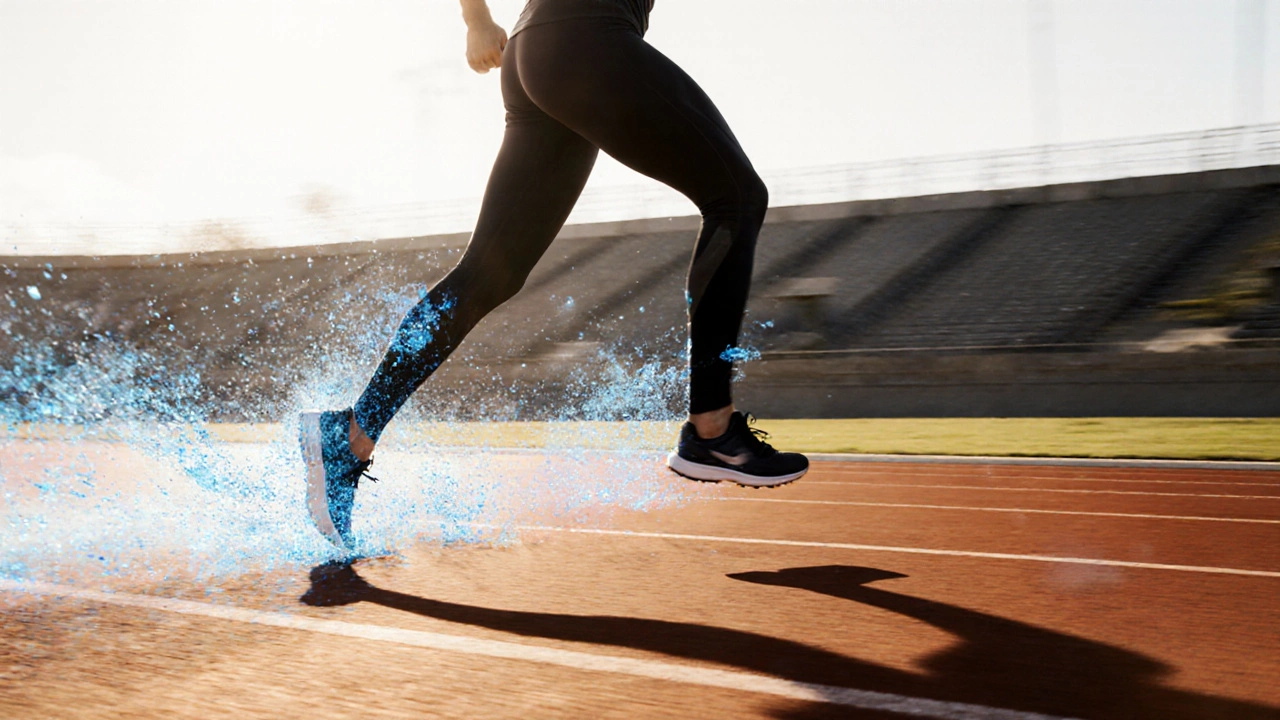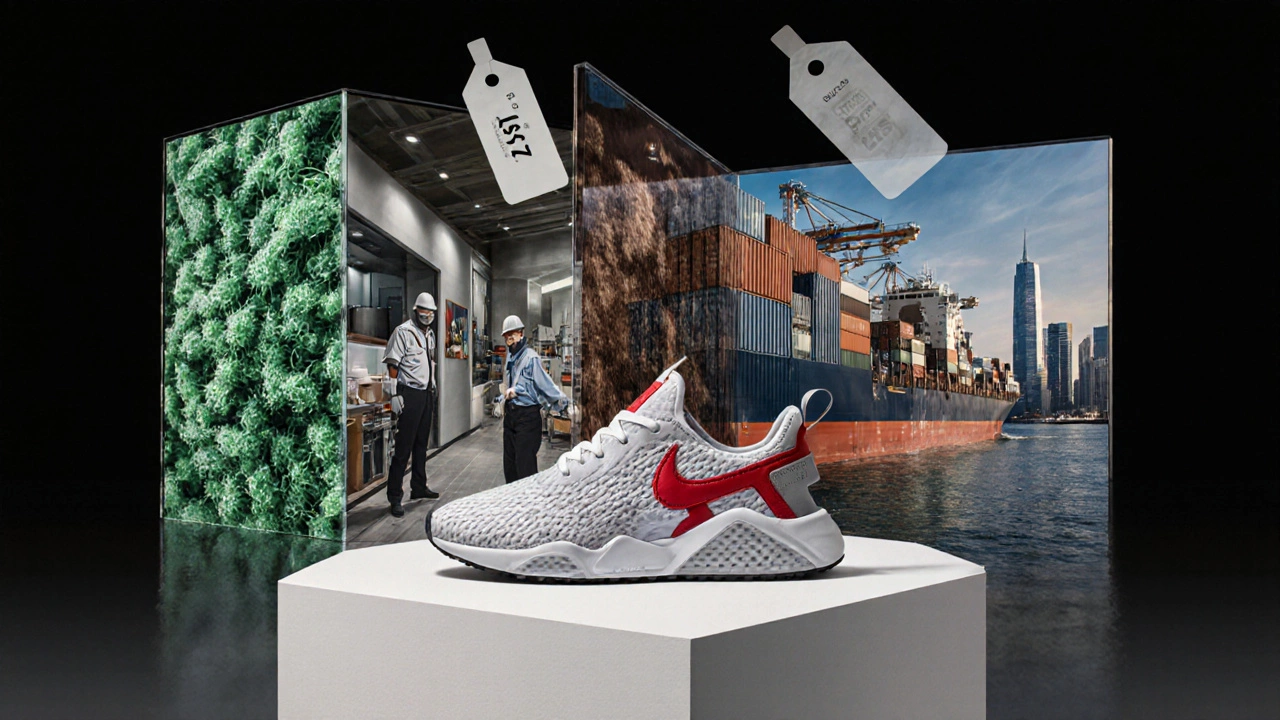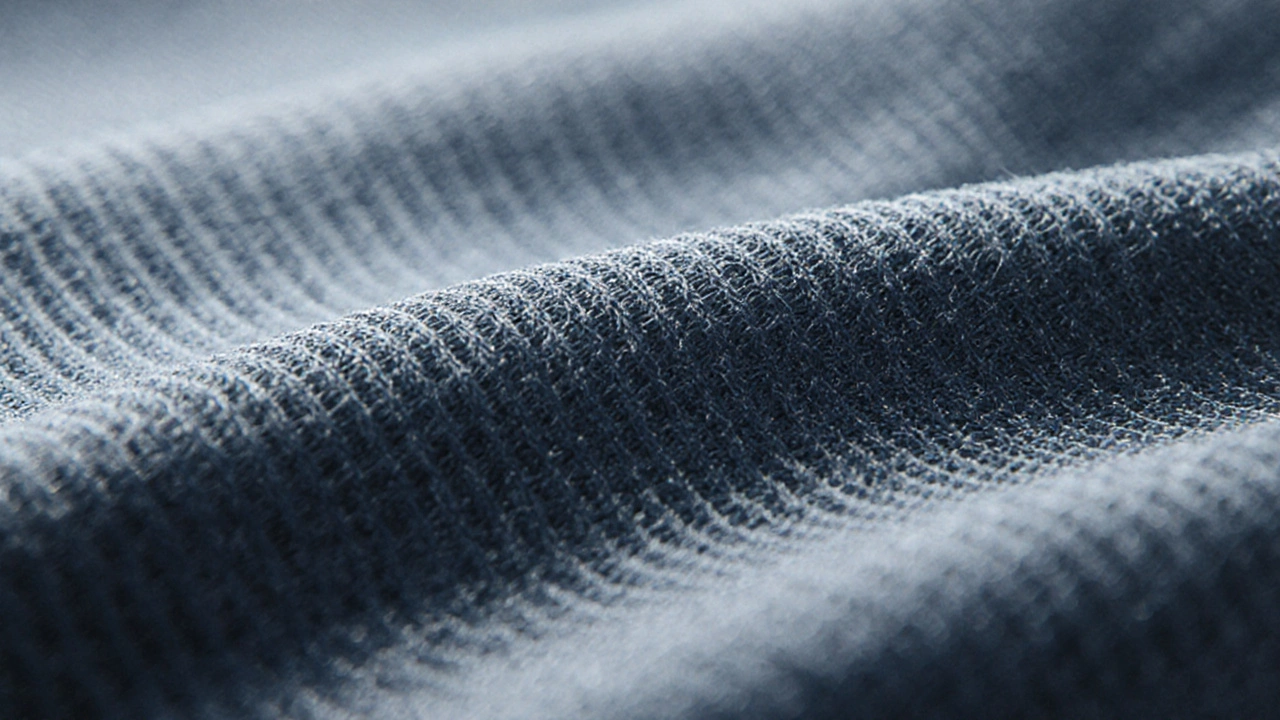Sportswear Cost Calculator
Base Price
Cost Factors
Select features that apply to your sportswear
Cost Breakdown
Base Price: $30.00
Total Estimated Cost:
$30.00
*Prices based on typical industry ranges
Ever wonder why a pair of running shoes or a sleek yoga top can cost as much as a dinner for two? The Sportswear is a category of clothing designed for performance, temperature regulation, and durability. That focus on function drives the price tag, but the story is deeper than "you get what you pay for". Below we break down the real reasons behind the sportswear cost and give you a clearer picture before you hit checkout.
Technical Fabrics - The Core Cost Driver
Most modern Technical fabrics are engineered to do more than just cover your skin. They combine polymers, yarn constructions, and proprietary treatments that manage sweat, block UV, and resist abrasion. A single kilogram of high‑performance polyester‑elastane blend can cost 3‑5 times more than basic cotton because manufacturers must source specialty fibers, run them through tighter knitting processes, and apply chemical finishes. Brands like Nike and Under Armour invest millions in R&D to perfect these blends, and that expense is reflected in the retail price.
Moisture‑Wicking Technology - Science Meets Sweat
When you hear terms like "Dri‑Fit" or "Climalite," they refer to Moisture‑wicking technology. The fabric pulls sweat away from the body, spreads it across a larger surface, and speeds up evaporation. Achieving consistent wicking performance requires precise fiber diameters and surface treatments that repel water. A 2023 lab study showed that wicking fabrics can be up to 40% more effective than untreated polyester, but the testing and licensing fees add roughly $8-$12 per garment.
Compression Fit - More Than a Tight Look
Compression apparel squeezes muscles to improve blood flow and reduce vibration. That tight fit isn’t just cutting fabric into a smaller shape; it needs a higher percentage of elastane (often 20%‑30%) and seamless construction to avoid chafing. The Compression fit also undergoes extensive biomechanical testing to verify claims, which can cost manufacturers an extra $5-$9 per piece.
Brand Premium - Paying for Reputation
Big names charge a markup simply because consumers trust their quality and style. The Brand premium often adds 30%‑50% on top of production costs. The price you see on a label usually covers marketing campaigns, athlete endorsements, and high‑visibility retail space. For example, when a famous sprinter appears in an ad, the brand’s advertising budget can rise by millions, and that cost is spread across every item sold.
Sustainable Materials - Green Comes at a Price
Eco‑friendly fabrics like recycled polyester, organic cotton, or bio‑based nylon appeal to environmentally conscious shoppers, but they cost more to source and process. Sustainable materials often require additional sorting, cleaning, and certification steps. In 2024, a study from the Sustainable Apparel Coalition found that recycled content can increase material costs by 20%‑35%, yet many brands still adopt it to meet consumer demand.

Supply Chain Complexity - From Factory to Front Door
Sportswear rarely travels straight from factory to store. Multiple hops - cutting, dyeing, finishing, quality checks, shipping, and warehousing - each add labor and logistics fees. The Supply chain complexity also means higher risk of delays, which brands hedge against by maintaining safety stock, inflating prices by another 10%‑15%.
Limited‑Edition Drops - Scarcity Sells
Collaborations with designers, artists, or sports teams create hype. A limited‑run sneaker or hoodie can sell out in minutes, and the Limited‑edition drops often carry a price bump of 25%‑40% because the perceived rarity drives demand.
Made‑in‑Australia Production - Local Labor Costs
Some shoppers prefer items made domestically for ethical or quality reasons. Australian factories adhere to stricter labor laws and higher wages, which translates to higher unit costs. When a brand opts for Made‑in‑Australia production, the final price can climb by $10‑$20 per garment compared to overseas manufacturing.
Performance Testing - Proof Is Pricier Than Guesswork
Before a jacket hits the market, it may be tested for wind resistance, water proofing, and temperature regulation in specialized labs. These Performance testing procedures can cost several hundred dollars per design, a cost that is amortized across the production run and reflected in the retail price.

Quick Cost‑Factor Summary
- Technical fabrics - high‑grade fibers and finishes.
- Moisture‑wicking - chemistry and licensing fees.
- Compression - more elastane and seamless stitching.
- Brand premium - marketing and endorsements.
- Sustainable materials - recycling and certification.
- Supply chain - multiple processing steps.
- Limited editions - scarcity markup.
- Local production - higher labor costs.
- Performance testing - lab expenses.
Cost Comparison Table
| Factor | Typical Added Cost per Item | Real‑World Example |
|---|---|---|
| Technical fabrics | $12‑$20 | Polyester‑elastane blend for a running tee. |
| Moisture‑wicking tech | $8‑$12 | Dri‑Fit treatment on a gym shirt. |
| Compression fit | $5‑$9 | High‑elastic leggings. |
| Brand premium | $10‑$30 | Logo‑heavy jacket from a global brand. |
| Sustainable materials | $6‑$15 | Recycled polyester fleece. |
| Supply chain | $5‑$10 | Multiple overseas shipping legs. |
| Limited‑edition drop | $15‑$40 | Collaborative sneaker release. |
| Made‑in‑Australia | $10‑$20 | Locally sewn training shorts. |
| Performance testing | $3‑$7 | Wind‑proof rating for a jacket. |
Tips to Save Without Sacrificing Performance
- Shop end‑of‑season sales - discounts of 30%‑50% are common.
- Look for older tech lines - they retain most benefits for less.
- Buy from reputable outlet stores - they carry genuine items at lower prices.
- Consider second‑hand platforms - many athletes sell barely‑used gear.
- Check for coupons or loyalty programs - brands often reward repeat buyers.
Frequently Asked Questions
Why does a cheap tee feel different from a pricey sports top?
Cheap tees usually use basic cotton or low‑grade polyester without any moisture‑wicking or stretch. Expensive tops incorporate technical fabrics, engineered seams, and finishes that keep you dry and comfortable during activity.
Can I get the same performance from a generic brand?
Some generic brands mimic the technology but often skip rigorous testing or use lower‑cost materials. You might notice less durability or weaker wicking, especially after repeated washes.
Do sustainable fabrics always cost more?
Generally yes, because recycling processes and certifications add overhead. However, as demand grows, prices are slowly dropping and some brands now offer eco‑friendly lines at comparable prices to conventional ones.
Is it worth paying extra for Made‑in‑Australia sportswear?
If you value strict labor standards, shorter shipping times, and support for local industry, the premium can be justified. Quality tends to be high, but you’ll still pay a noticeable markup.
How do limited‑edition drops affect regular prices?
The hype drives up perceived value, so brands set higher price points. Even after the hype fades, resale markets can keep the item pricey, but the original retail price already reflects the scarcity markup.
What should I look for in a performance‑tested jacket?
Check the lab ratings: water column (for waterproofing), wind resistance (Cfm), and breathability (g/m²/24h). Brands that publish these numbers usually invested in the testing that adds to the cost.
